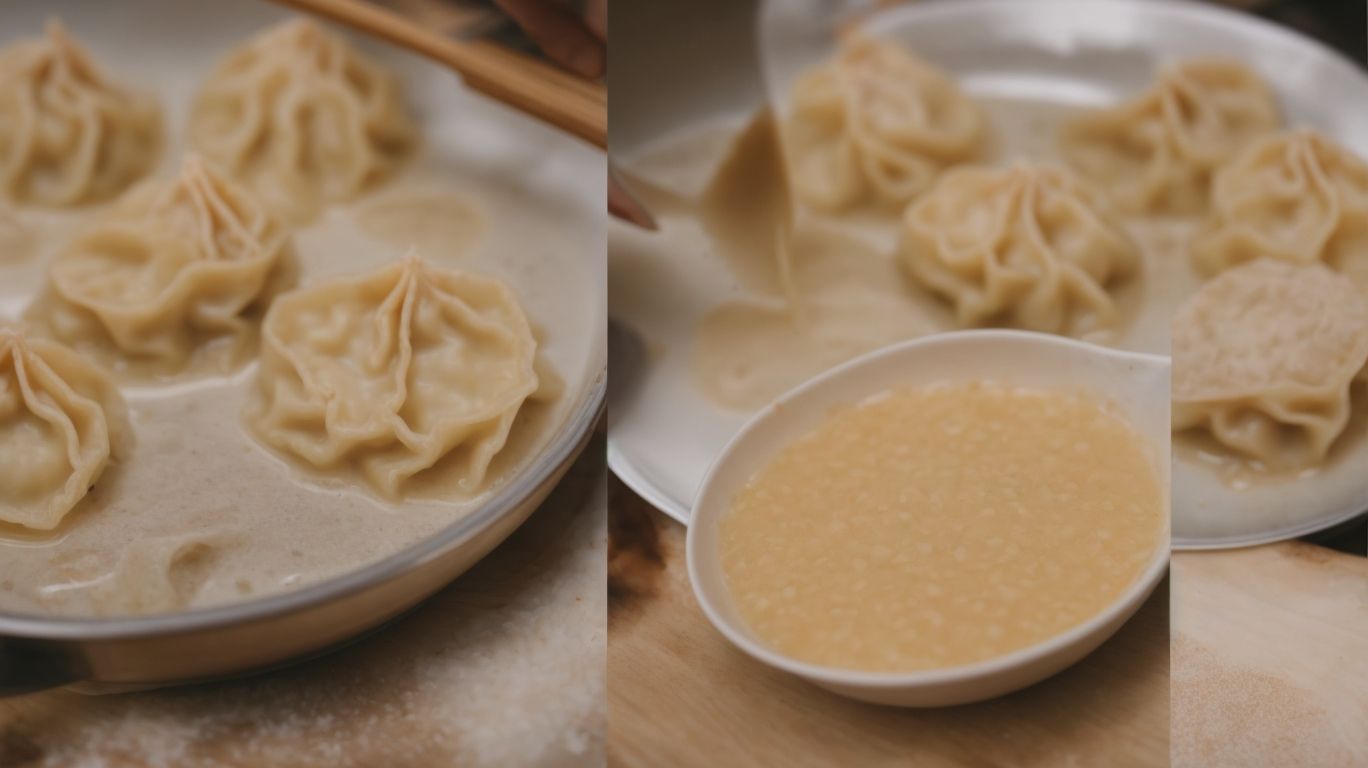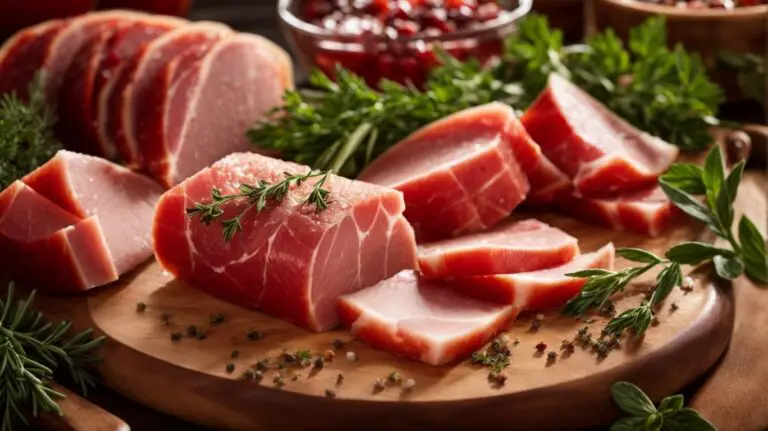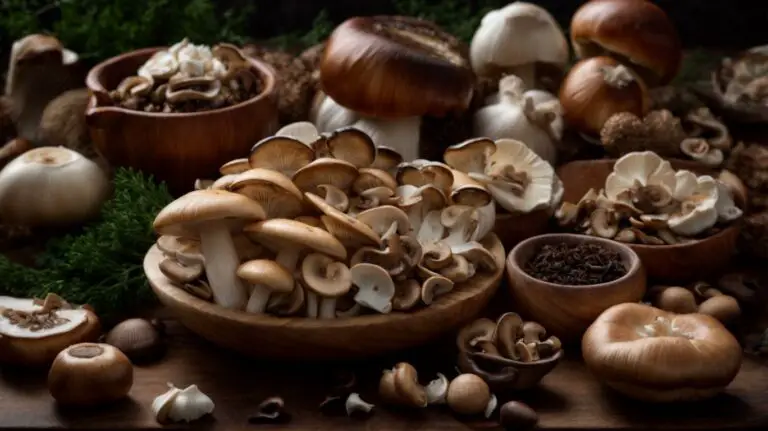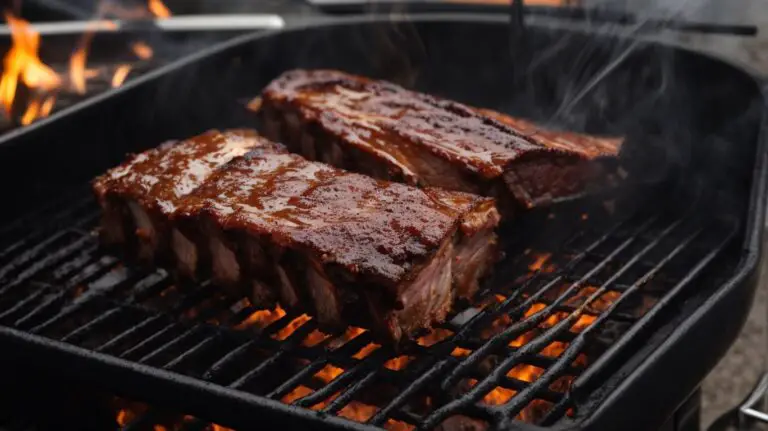How to Cook Suet Dumplings Without Stew?
Are you looking to add a comforting and delicious dish to your recipe repertoire?
Suet dumplings are a classic British favorite that are easy to make and versatile to cook.
We will explore what suet dumplings are, the ingredients needed to make them, and a step-by-step guide on how to prepare them.
Dive into various cooking methods to enjoy suet dumplings without stew. Get ready to elevate your culinary skills and impress your family and friends with this tasty treat!
Key Takeaways:
What Are Suet Dumplings?
Suet dumplings are a traditional British dish known for their delicious taste and texture.
Originally, suet dumplings were made as a way to use up the leftover ingredients, making them a frugal and hearty meal option. These doughy delights are often served alongside savory stews, creating a comforting and filling meal. Suet, which is the hard fat around the kidneys and loins of beef or mutton, gives the dumplings a rich and flavorful taste. The process of steaming the dumplings allows them to puff up, resulting in a light and fluffy texture that contrasts well with the hearty stews. Different regions of Britain have their own variations of suet dumplings, with some recipes incorporating herbs or adding suet pastry toppings to pies.
What Are the Ingredients for Suet Dumplings?
The essential ingredients for suet dumplings include flour, suet, and other key components that contribute to their British heritage.
Flour serves as the main structure for the dumplings, providing the necessary bulk and texture. Suet, traditionally sourced from beef or mutton, adds a rich and savory flavor to the dumplings, characteristic of British cuisine.
Water is another crucial ingredient that binds the dough together, ensuring the dumplings hold their shape during cooking. A pinch of salt enhances the overall taste profile, balancing the richness of the suet and complementing any accompanying dishes such as hearty stews or soups.
Flour
Flour is a fundamental ingredient in suet dumplings, with options like plain flour and self-raising flour offering distinct characteristics to the dough.
Regarding making suet dumplings, the type of flour you choose plays a crucial role in both texture and rise.
Plain flour is a basic pantry staple that provides a denser and more traditional consistency to the dumplings. On the other hand, self-raising flour contains a raising agent like baking powder, resulting in lighter and fluffier dumplings. Understanding the differences in these flour varieties enables you to tailor your dumplings to your desired taste and texture preferences.
Suet
Suet, particularly shredded suet, is a crucial component that gives suet dumplings their signature richness and texture.
When suet is used in suet dumplings, it not only adds a beautiful moistness but also contributes to the overall indulgent taste. The role of shredded suet cannot be understated – it helps to create that perfect balance between tenderness and richness in the dumplings. By incorporating finely shredded suet into the dumpling mixture, you ensure that as the dumplings cook, the suet melts, leaving behind those lovely, tiny pockets of air that make the texture irresistibly light and fluffy.
Baking Powder
Baking powder is used in suet dumplings to help them rise and achieve a light and fluffy texture when cooked.
The text is already formatted with HTML tags for bold text and paragraph structure. No further formatting is required.
Milk
Milk is added to suet dumpling dough to bind the ingredients together and create a cohesive mixture that can be shaped into dumplings.
Milk plays a vital role in providing the necessary moisture to the dough, ensuring that the dumplings turn out soft and tender upon cooking. This dairy ingredient also contributes to the overall flavor profile of the dumplings, adding a subtle richness. Milk helps in activating the gluten in the flour, aiding in the structure formation of the dumplings.
For those looking for alternative binding agents, options like buttermilk or even non-dairy milk substitutes such as almond milk or coconut milk can be used as suitable replacements, though they may slightly alter the taste and texture of the final dish.
Salt
Salt is essential in suet dumplings to enhance the overall flavor profile and balance the taste of the dish.
When added to suet dumplings, salt not only brings out the natural flavors of the ingredients but also plays a crucial role in seasoning the dish to perfection. Its ability to heighten taste receptors on our tongue makes each bite more impactful and enjoyable. In traditional recipes, salt acts as a fundamental ingredient that complements the richness of suet, creating a harmonious blend of savory notes. By carefully incorporating the right amount of salt, chefs can elevate the culinary experience and cater to a wider range of taste preferences.
How to Make Suet Dumplings?
Creating suet dumplings involves a series of steps including mixing the ingredients, shaping the dough, and achieving the right consistency for perfect dumplings.
Once you’ve gathered your suet, flour, and seasoning, the first step is to combine them in a bowl. Suet adds a rich and savory flavor to the dumplings, while flour acts as the base for the dough. Seasoning with salt and herbs enhances the taste.
Next, gradually add cold water to the mixture, stirring until a soft, pliable dough forms. Be careful not to overmix, as this can lead to tough dumplings. The dough should be moist but not sticky.
Now comes the fun part – shaping the dumplings! Take small portions of the dough and roll them into balls between your palms. These round shapes will cook evenly and look appealing in the finished dish.
Mix the Dry Ingredients
To begin making suet dumplings, start by mixing the dry ingredients such as flour, baking powder, and salt in a bowl.
Proper mixing of dry ingredients is crucial for achieving the right texture in your suet dumplings. It’s essential to ensure that the flour, baking powder, and salt are evenly distributed to guarantee uniformity in the final product. When combining these ingredients, use a whisk or fork to break up any lumps and ensure they are thoroughly integrated.
Pay attention to the consistency and color of the mixture as you blend the dry components. A well-mixed dry mixture will appear homogenous, without any pockets of unmixed flour or baking powder. This step sets the foundation for a successful dumpling that will rise evenly and have a tender, flaky texture.
Add the Suet
Next, add the shredded suet to the dry ingredients and gently incorporate it into the flour mixture until evenly distributed.
When blending in the suet, take your time to ensure each tiny piece gets coated with the flour mixture, creating pockets of rich flavor throughout the dumpling dough. The suet adds a wonderful richness and texture to the dumplings, so it’s essential to distribute it evenly. Make sure there are no large clumps of suet left in the mixture, as they can create uneven pockets of fat in the dough. By blending the suet thoroughly, you’ll achieve a tender and flavorful dumpling that melts in your mouth.
Gradually Add Milk
Gradually pour in the milk while mixing the dough to achieve the right consistency for suet dumplings that are neither too dry nor too wet.
This process of adding the milk slowly ensures that the dough absorbs the moisture uniformly and prevents it from becoming overly sticky. By doing this, you have better control over the hydration level of the dumpling mixture, resulting in light and fluffy dumplings when cooked.
Knead the Dough
Knead the suet dumpling dough gently to develop gluten and ensure proper binding of the ingredients for a cohesive texture.
Gluten development is crucial in creating the structure and elasticity of the dough, giving the dumplings their desired chewy texture. By kneading gently, you are encouraging the proteins in the flour to form long and stretchy strands, which helps trap the steam during cooking, resulting in light and fluffy dumplings.
The gentle kneading process also aids in evenly distributing the fat from the suet throughout the dough, ensuring that each bite is rich and flavorful. This cohesion of ingredients is essential for achieving a consistent texture and flavor profile in every bite.
Shape the Dumplings
Shape the suet dumpling dough into small balls or discs, ensuring uniform size for consistent cooking and serving.
To enhance the visual appeal of your suet dumplings, consider shaping them into fun and creative forms such as mini nests, hearts, or even small animals. This not only adds a touch of whimsy to your dish but also showcases your culinary skills.
Remember that while creativity is key, maintaining size consistency is crucial for even cooking. Using a mold or simply shaping them by hand, pay attention to details to ensure each dumpling is uniform in size and shape.
How to Cook Suet Dumplings Without Stew?
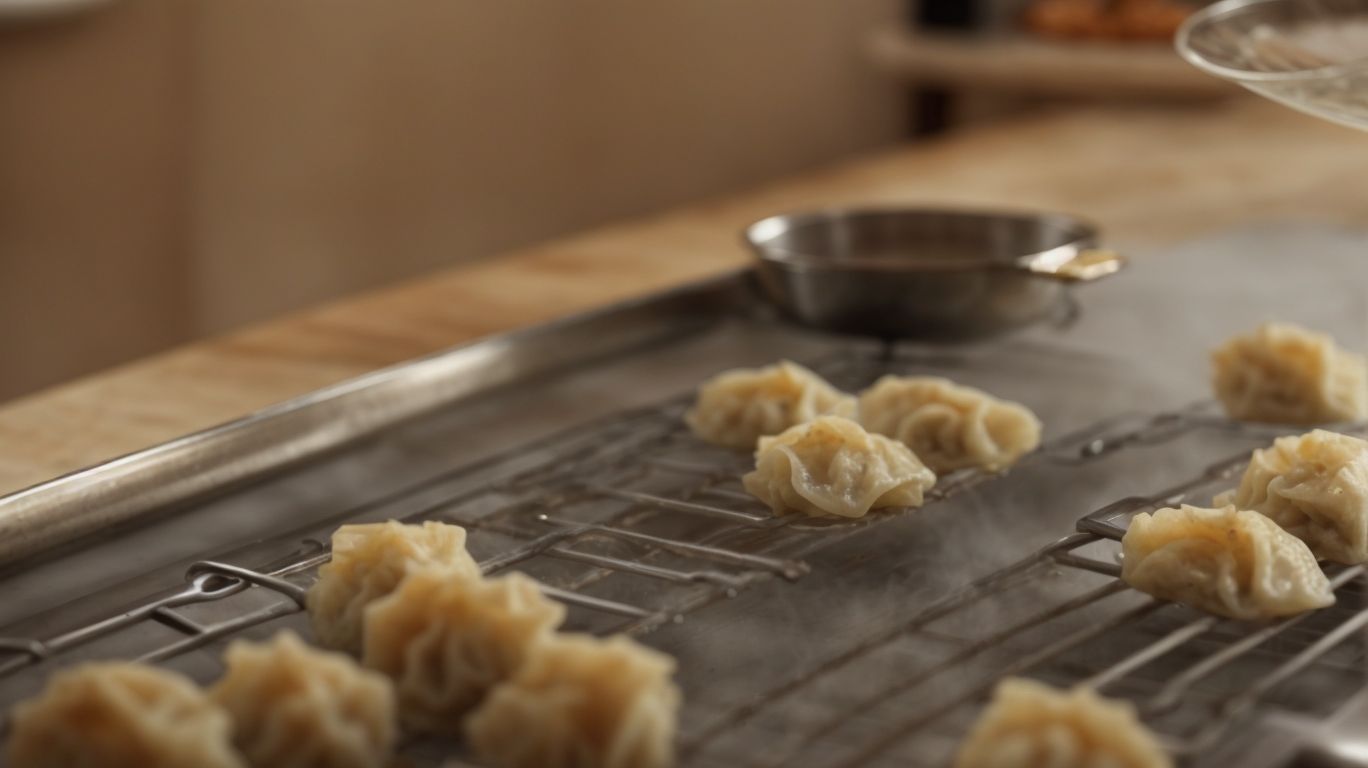
Credits: Poormet.Com – Juan Sanchez
Cooking suet dumplings without stew can be achieved through methods like boiling, steaming, baking, frying, each offering distinct textures and flavors.
-
Boiling suet dumplings in seasoned water helps infuse them with savory flavors while keeping the texture moist and tender.
-
Steaming suet dumplings allows them to gently cook in the steam, resulting in a light and fluffy consistency.
-
Baking suet dumplings in the oven creates a crispy exterior while maintaining a soft interior, perfect for those who enjoy contrasting textures.
-
Frying suet dumplings in a hot skillet provides a deliciously golden crust that adds crunchiness to the dumplings.
Boil the Dumplings in Water
Boiling suet dumplings in water is a classic method that yields a soft and tender texture, ideal for absorbing accompanying flavors or sauces.
This traditional cooking technique involves simmering the dumplings in gently boiling water until they are cooked through and reach the desired consistency. Typically, the dumplings are submerged in the water for about 20-30 minutes, allowing them to expand and become light and fluffy.
The process of boiling suet dumplings helps them puff up as the suet melts and creates air pockets within the dough, resulting in a moist and flavorful interior. The exterior of the dumplings should be slightly firm but still tender to the bite, providing a satisfying contrast to the rich fillings or gravies they are often paired with.
Steam the Dumplings
Steaming suet dumplings is a healthier cooking option that preserves the natural flavors and nutrients while imparting a light and fluffy texture.
When you steam suet dumplings, the gentle heat helps to retain the integrity of the ingredients, ensuring that the flavors remain vibrant and the texture stays moist and tender. Unlike other cooking methods that may lead to flavor loss and nutrient depletion, steaming locks in the goodness of the ingredients, resulting in a more wholesome dish. Steaming suet dumplings is a great way to reduce the need for added fats or oils, making it a light and heart-friendly cooking technique.
Bake the Dumplings
Baking suet dumplings in the oven creates a golden glow and crispy exterior, adding a delightful crunch to contrast the soft interior.
For achieving that perfect texture, it’s important to preheat your oven thoroughly before popping in the dumplings. Preheating to about 200°C (400°F) ensures that the fat in the suet quickly melts, creating steam that helps in the rising process. Once the dumplings are in, don’t be tempted to open the oven door frequently. Optimal cooking time ranges around 20-25 minutes, but always keep an eye on them to avoid over-browning. This method guarantees a mouthwatering blend of fluffiness and crispiness that will impress anyone at the dining table!
Fry the Dumplings
Frying suet dumplings in a pan or an air fryer can create a deliciously crispy exterior, enhancing the overall taste and texture.
When pan-frying suet dumplings, the direct contact with the heated surface of the pan allows for a quicker sear, sealing in the juices and flavors while giving the dumplings a golden brown hue. On the other hand, air frying suet dumplings utilizes hot air circulation to achieve a similar crispy texture with less oil, making it a healthier alternative. Both methods offer unique benefits – pan-frying enhances the traditional richness of the dumplings, while air frying provides a lighter and less greasy option. Experimenting with different frying techniques can help you discover your preferred flavor profile for these delightful treats.
Serve and Enjoy!
Once cooked, serve the suet dumplings hot with your favorite accompaniments and savor the delightful taste and texture.
Creating a satisfying meal experience, pair the suet dumplings with sides like creamy mashed potatoes,
- rich onion gravy
- steamed seasonal vegetables
. The contrast of the fluffy dumplings against the savory gravy enhances the overall taste. To elevate the presentation, garnish with freshly chopped parsley for a pop of color and freshness. Enjoy this comforting dish with loved ones around the dinner table, relishing the warmth and homely flavors that each bite brings.
Frequently Asked Questions
Can I cook suet dumplings without stew?
Yes, you can cook suet dumplings without stew. In fact, suet dumplings can be used in a variety of dishes, not just stews.
What is suet and why is it used in dumplings?
Suet is the hard fat found around the kidneys and loins of cattle and sheep. It is used in dumplings for its rich flavor and ability to create a light and fluffy texture.
Are there any alternatives to suet for making dumplings?
Yes, you can use vegetable shortening or butter as a substitute for suet in dumplings. However, keep in mind that the flavor and texture may vary.
How do I make suet dumplings without stew?
To make suet dumplings without stew, you can simply cook them in boiling water for 15-20 minutes until they are fluffy and cooked through. You can also bake them in the oven for a crispy texture.
Can I add herbs and spices to my suet dumplings?
Yes, you can add herbs and spices to your suet dumplings for added flavor. Some popular options include rosemary, thyme, and black pepper.
Can I make suet dumplings ahead of time?
Yes, you can make suet dumplings ahead of time and freeze them for later use. When ready to cook, simply thaw them and follow the cooking instructions above.

